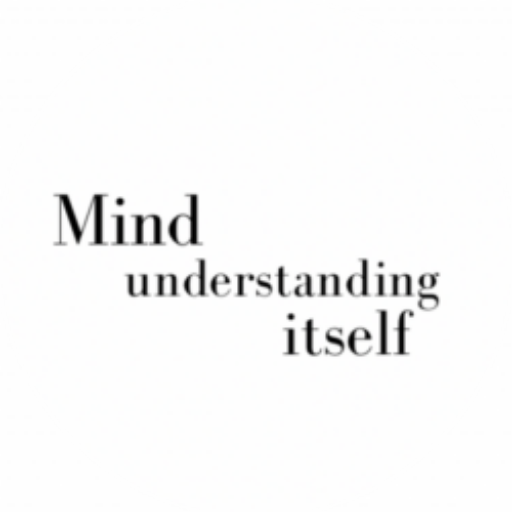Can We Have Mixed Emotions? The Neuroscience of Ambivalence
Previously, we discussed how emotions arise, are regulated, and get resolved in the brain. But can we have more than one—perhaps even more than two—emotions at the same time?
Research suggests that we can. Ambivalence, the experience of having two or more contradictory emotions simultaneously, is common. Studies indicate that the brain processes multiple emotions in parallel rather than sequentially. But how does this actually happen in the brain?
Whether one emotion dominates or multiple emotions coexist depends on how they are processed in the brain. Let’s break this down into two scenarios.
In the first scenario, the person is experiencing both excitement and nervousness that can coexist. Although being nervous, the person is focusing on the positive aspects, and lets the nervousness stay.
In the second scenario, however the person is experiencing anxiety next to excitement, which prevents him from enjoying the moment. His hippocampus is not helping by reminding him of his ‘failures’. He will have to activate his prefrontal cortex more to focus its shift more helpful thoughts, and so that he can enjoy the excitement.
Scenario 1: Coexistence of Two Emotions (The person is enjoying both)
Example: A person gives a speech at a conference and feels both excitement and nervousness. Instead of one dominating the other, they coexist, creating a heightened experience.
1. The Emotions Arise
- Amygdala detects uncertainty, triggering both excitement (reward) and nervousness (threat)
- Nucleus accumbens sees the rewarding aspect
- e.g., potential success, social recognition
- Hypothalamus increases heart rate and sweating
2. The Emotions are Processed
- Insula makes both emotions feel real in the body
- e.g., butterflies, racing heart
- Anterior cingulate cortex (ACC) notices the emotional conflict but doesn’t try to pick one over the other, allowing both emotions to be felt simultaneously
- Prefrontal cortex (PFC) reinterprets nervousness as something positive – cognitive reappraisal, modification of the thoughts
- e.g., “This means I care about my performance.”
3. Emotions are Resolved
- PFC continues reappraisal
- letting nervousness and excitement exist at the same time
- Nucleus accumbens maintains reward feeling
- making the experience enjoyable rather than stressful
- Hippocampus encodes the experience as a positive memory
- reinforcing confidence in public speaking for the next time
Scenario 2: One Emotion Dominates Over the Other
Example: A student graduates, feeling both excitement for the future and anxiety about what comes next. Eventually, excitement takes over.
1. The Emotions Arise
- Amygdala detects both excitement and anxiety
- new opportunities but also uncertainty about the future
- Nucleus accumbens responds to the celebration, reinforcing the joy of achievement
- Hippocampus recalls past memories fueling some doubts about ‘being ready to the future’
- “I have not been accepted to grad school yet.”
2. The Emotions are Processed
- ACC registers the emotional conflict but doesn’t force one emotion over the other
- PFC tries to focus on the student’s accomplishments and future potential
- “I have also made achievements including maintaining a good cGPA.”
- Amygdala keeps anxiety active, but the nucleus accumbens strengthens excitement
3. The Emotions are Resolved
- PFC reframes uncertainty as part of growth, shifting focus toward opportunities rather than fear
- “Graduating is a big change and it is normal to feel anxious. Yet, I am finally graduating and that’s is a big accomplishment.”
- Excitement becomes dominant, with the reward system reinforcing motivation and optimism
- Autonomic responses shift
- The person now has an energized posture, increased engagement, and a sense of confidence replaces initial hesitation
Here is a comparative summary of what differs in these brain regions in the two scenarios:
Comparison of Neural Dynamics
| Brain region | Coexisting Emotions | One Emotion Dominating |
| Amygdala | Activates for both emotions | Competes between emotions, one takes over |
| Nucleus Accumbens (Reward System) | Maintains activation for positive experience | Can be suppressed if negative emotion dominates e.g., anxiety |
| ACC (Conflict Monitoring) | Registers conflict but allows coactivation | Attempts resolution, but may favor one side e.g., excitement |
| PFC (Cognitive Reappraisal) | Frames both emotions as meaningful | Tries reappraisal but may fail e.g., “I have also made accomplishments…” |
| Hippocampus (Memory) | Integrates emotional memory | Reminds of past experiences e.g., reminding him of cGPA, instead of not being admitted to the grad school |
| Autonomic Response | Energized, high arousal | Can shift toward one side e.g., here the person became more energized, engaged and confident |
In summary, mixed emotions do exist. It’s easier when emotions are enjoyable or tolerable. While all feelings are meant to be felt and acknowledged, sometimes difficult emotions can be overwhelming. In such cases, cognitive reappraisal can help shift focus toward a gentler emotion.
So, even in those moments of very intense feelings, there might be a gentler feeling overshadowed behind.
Is it even possible to have only one emotion at a time? Look for the answer, and see.
Best,
Aysegul
References
Etkin, A., Egner, T., & Kalisch, R. (2010). Emotional processing in anterior cingulate and medial prefrontal cortex. Trends in Cognitive Sciences, 15(2), 85–93. https://doi.org/10.1016/j.tics.2010.11.004
Feinstein, J. S., Adolphs, R., Damasio, A., & Tranel, D. (2010). The human amygdala and the induction and experience of fear. Current Biology, 21(1), 34–38. https://doi.org/10.1016/j.cub.2010.11.042
Klumpp, H., Post, D., Angstadt, M., Fitzgerald, D. A., & Phan, K. L. (2013). Anterior cingulate cortex and insula response during indirect and direct processing of emotional faces in generalized social anxiety disorder. Biology of Mood & Anxiety Disorders, 3(1). https://doi.org/10.1186/2045-5380-3-7
Phillips, M. L., Drevets, W. C., Rauch, S. L., & Lane, R. (2003). Neurobiology of emotion perception I: the neural basis of normal emotion perception. Biological Psychiatry, 54(5), 504–514. https://doi.org/10.1016/s0006-3223(03)00168-9
Vaccaro, A. G., Wu, H., Iyer, R., Shruti Shakthivel, Christie, N. C., Damasio, A., & Kaplan, J. (2024). Neural patterns associated with mixed valence feelings differ in consistency and predictability throughout the brain. Cerebral Cortex, 34(4).







